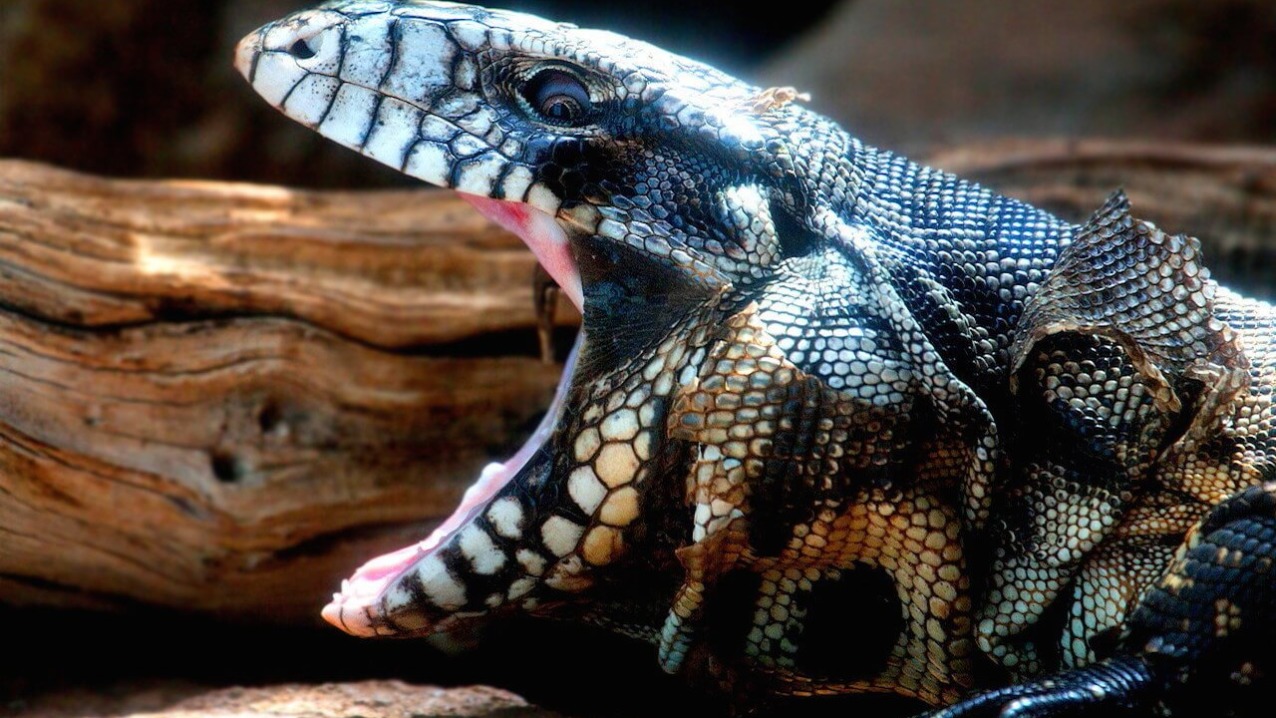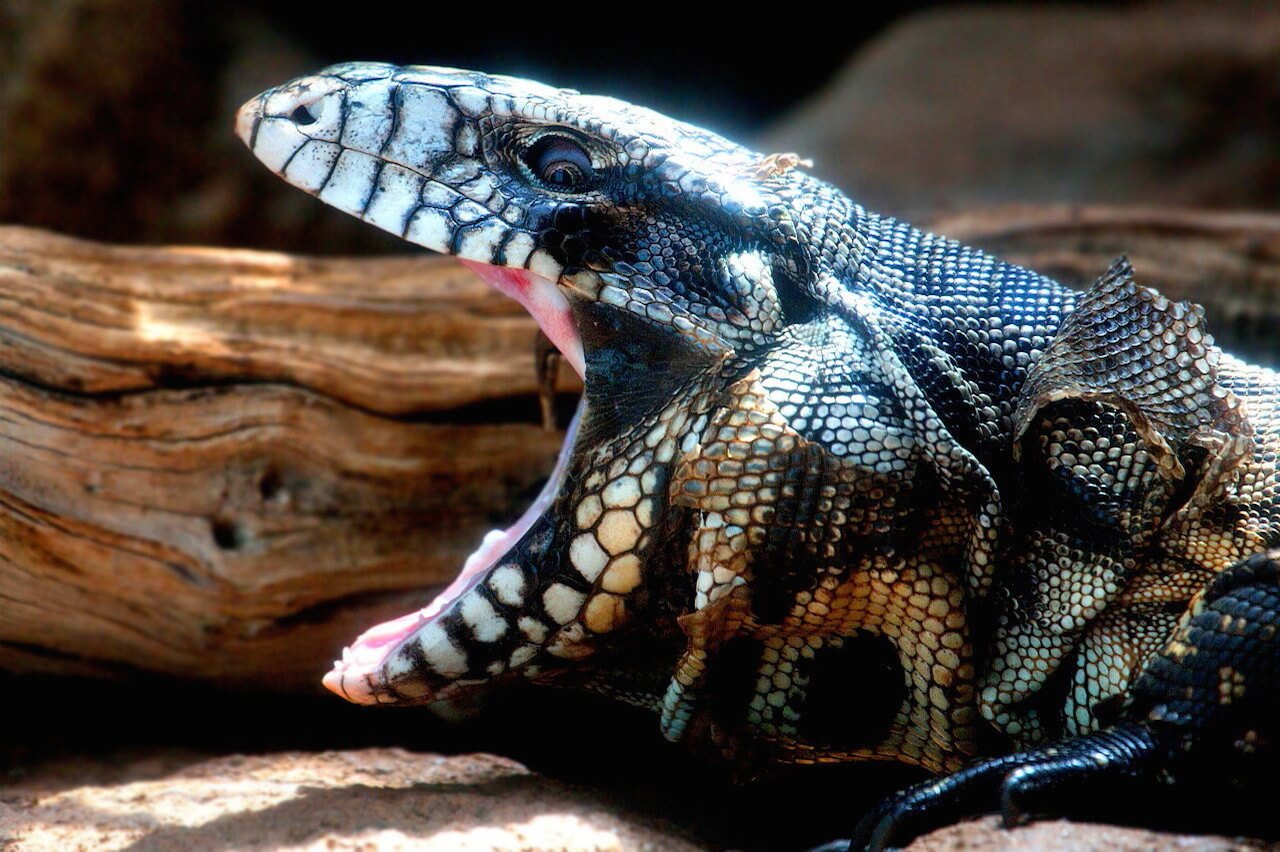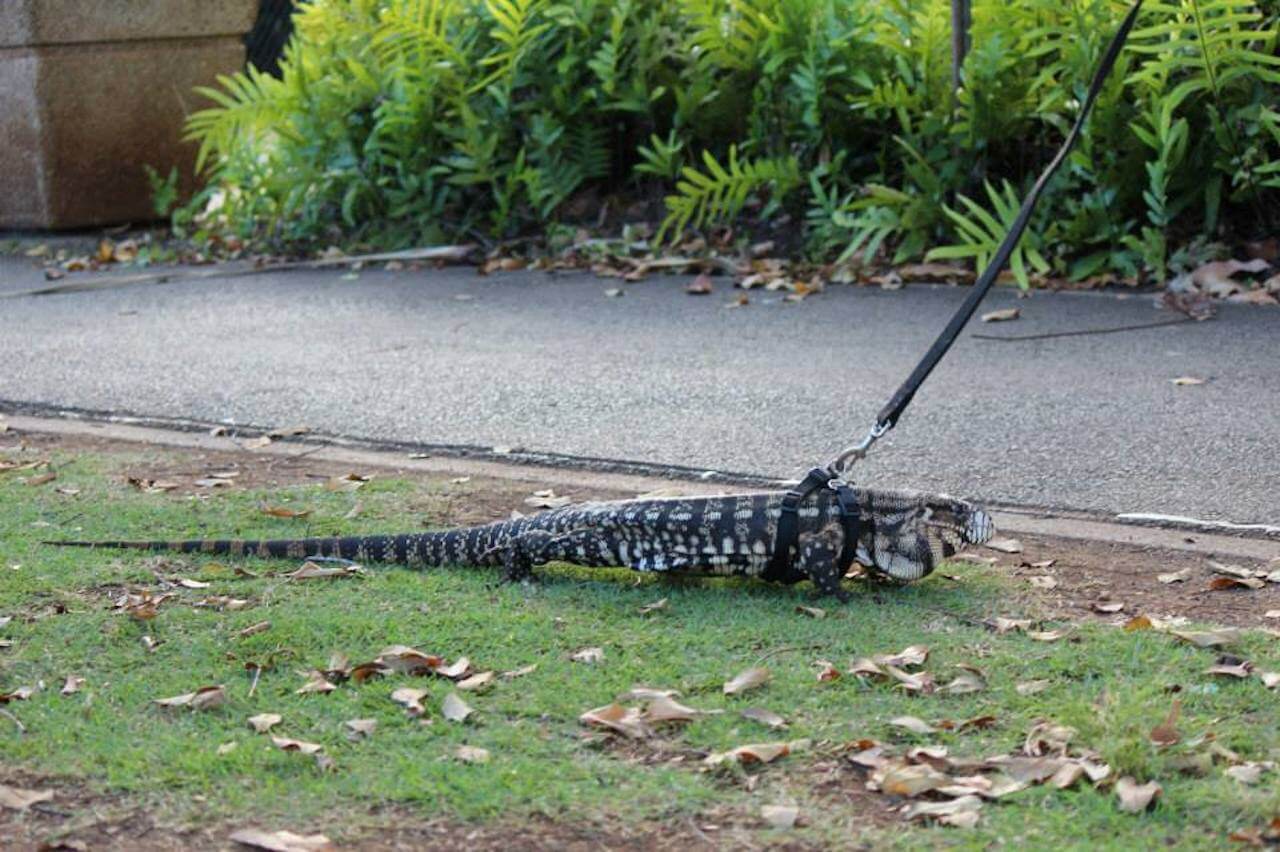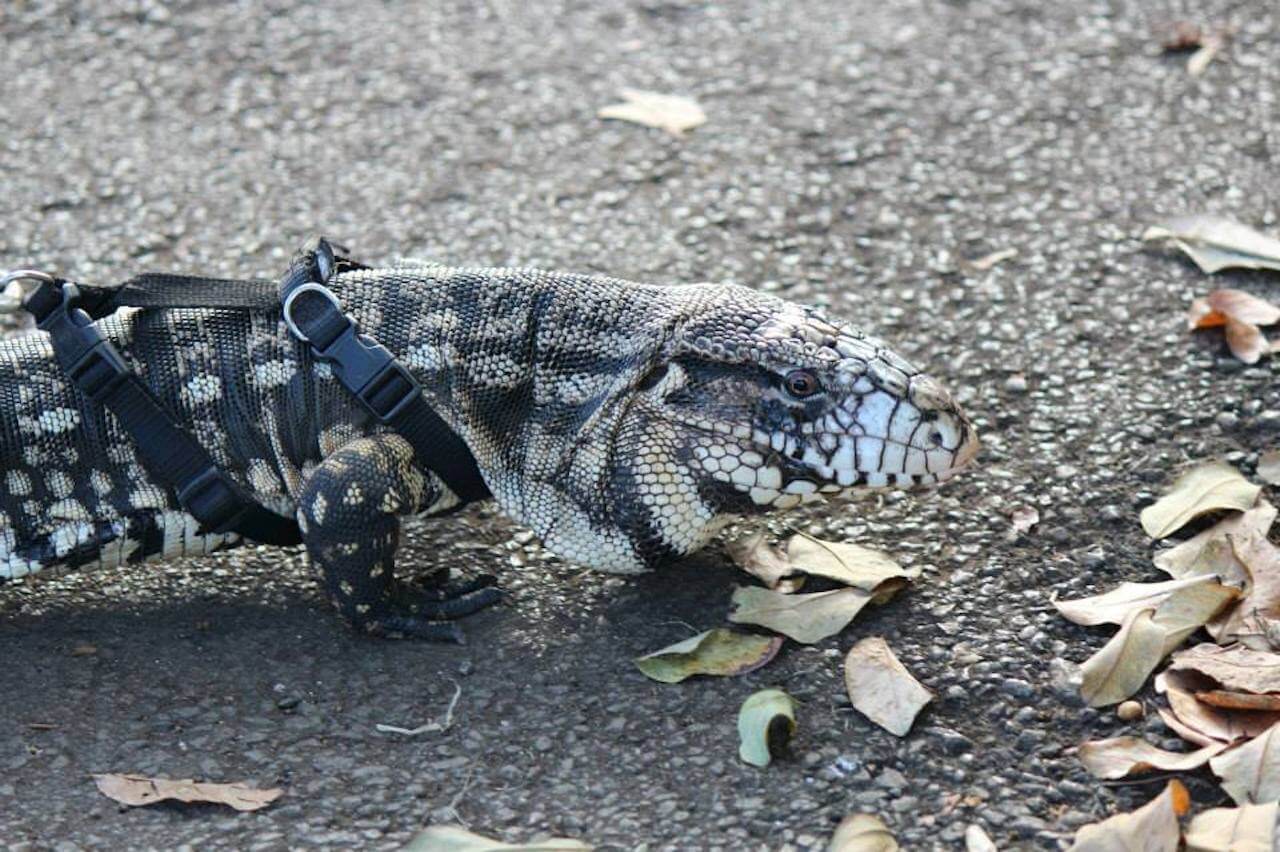Salvator merianae
Argentine Black and White Tegu
About Me
Scientific Name: Salvator merianae
Description
Glossy black with 9 to 10 groups of whitish-yellow or gold spots arranged in crossbands. Tail is marked with alternating bands of black and white in the young that fade with age. Old males and fattened specimens tend to develop heavy jowls. Long tongue is red.
Fun Facts
- Are agile climbers and swimmers.
- Tail is marked with alternating bands of black and white in the young that fade with age.
- Kingdom: Animalia
- Phylum: Chordata
- Class: Reptilia
- Order: Squamata
To 4-1/2 feet, average 3 feet. Pointed head. Long, forked, protrusible tongue. Small, granular dorsal scales. Ventral scales larger, in 22 to 27 longitudinal rows. Long, cylindrical tail which may be broken off and regenerated.
Glossy black with 9 to 10 groups of whitish-yellow or gold spots arranged in crossbands. Tail is marked with alternating bands of black and white in the young that fade with age. Old males and fattened specimens tend to develop heavy jowls. Long tongue is red.
Eastern and central South America. Ground dwellers, mainly in forest clearings. Dig their own burrows. Are agile climbers and swimmers.
4 to 8 eggs, approximately 2 inches long, are laid in termite mounds and cemented in by the termites. Hatchlings are 6 to 8 inches long, and break open the mound upon hatching.
Small vertebrates, large arthropods; occasionally eggs, sweet fruit, plants (especially blossoms).
Other Reptiles
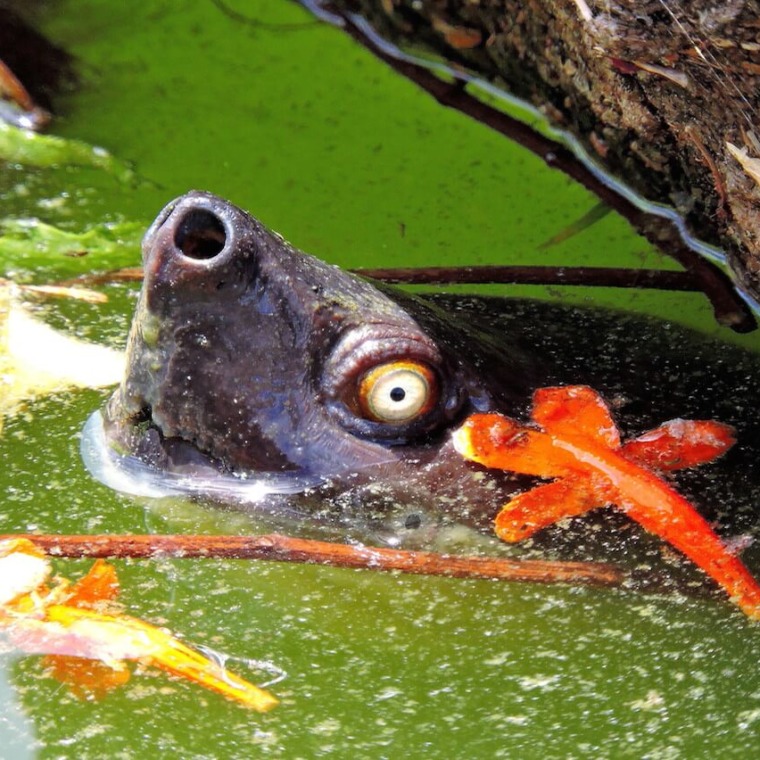
The last populations of Tutong are found in India, Indonesia, Bangaladesh, and Malaysia. It is extinct in its former range of Thailand, Myanmar, Vietnam, and Singapore.
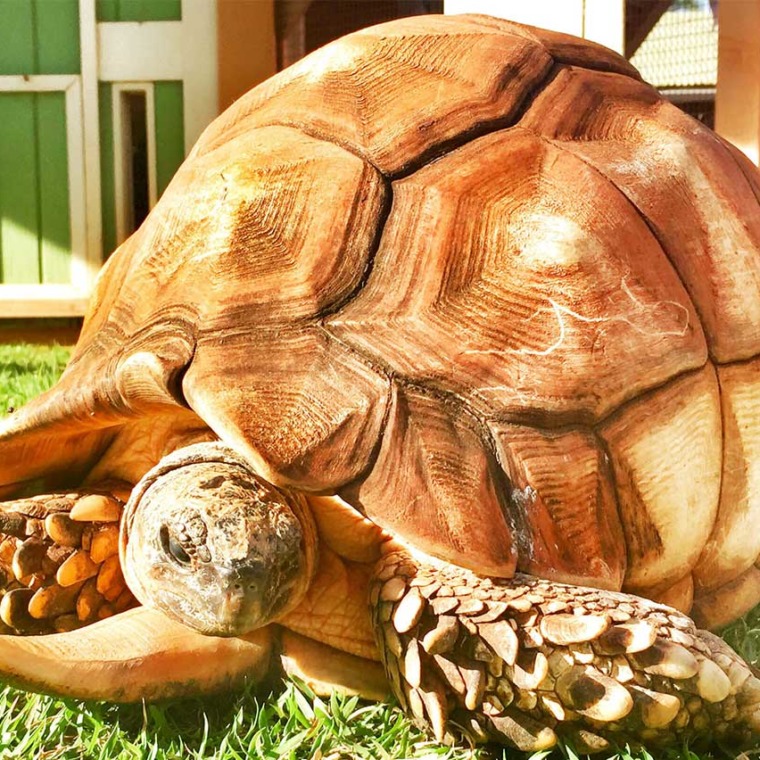
Inactive during cool, dry season (May to October). Does not dig burrows. Seeks protection in thickets and seeks shelter in surface litter. Forages during morning and late afternoon.
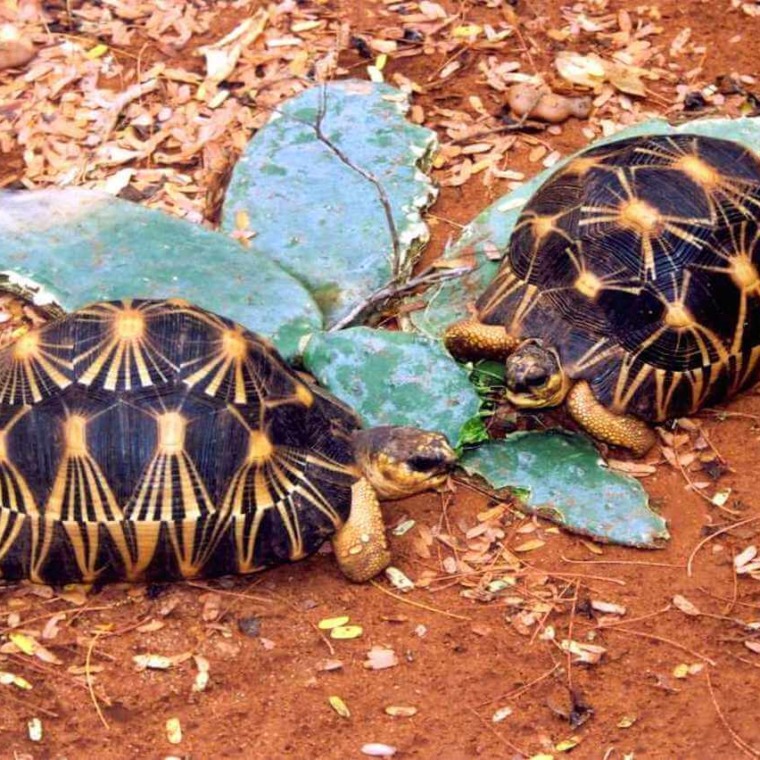
In the wild, this reptile is relegated to the extreme south and south-western portions of Madagascar. In recent times, they have also been introduced to the nearby island of Reunion.
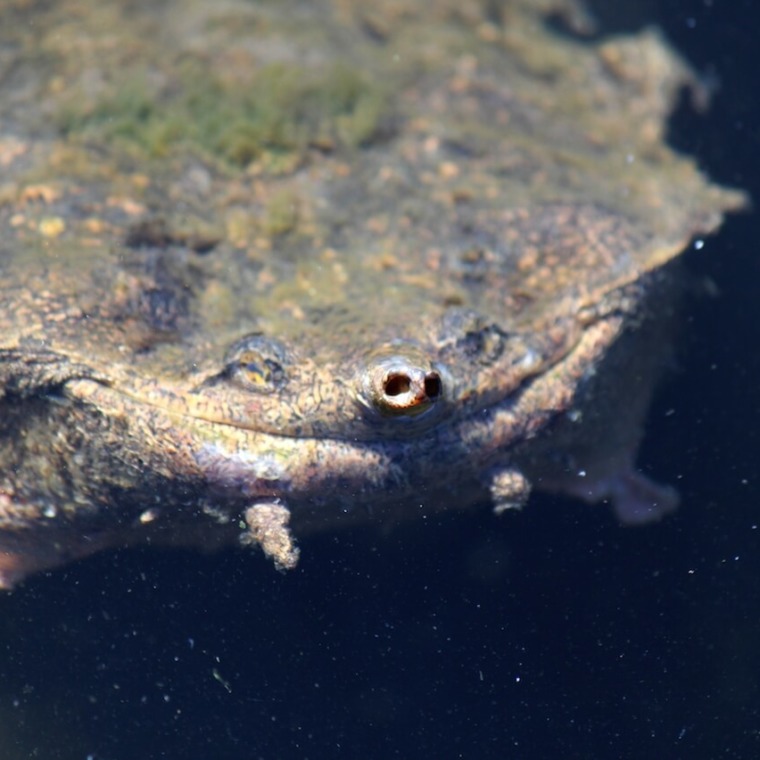
This species inhabits stagnant pools in Brazil and the Guianas and also in parts of the Amazon River and in Trinidad.
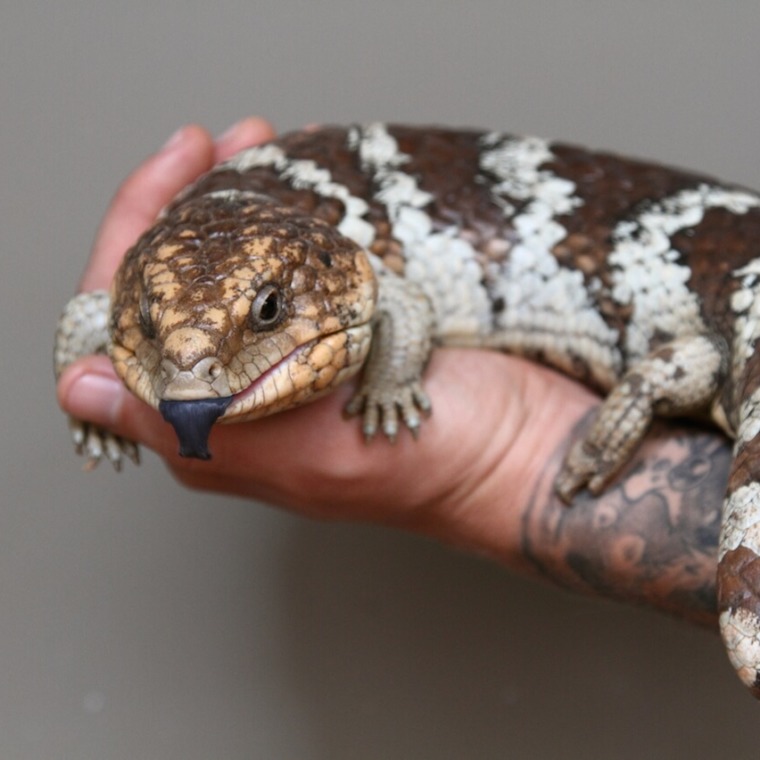
The Shingleback skink is found in southern and western Australia, in desert grassland areas or sandy dunes. Skinks are shy and secretive and seldom stray far from their shelter.


